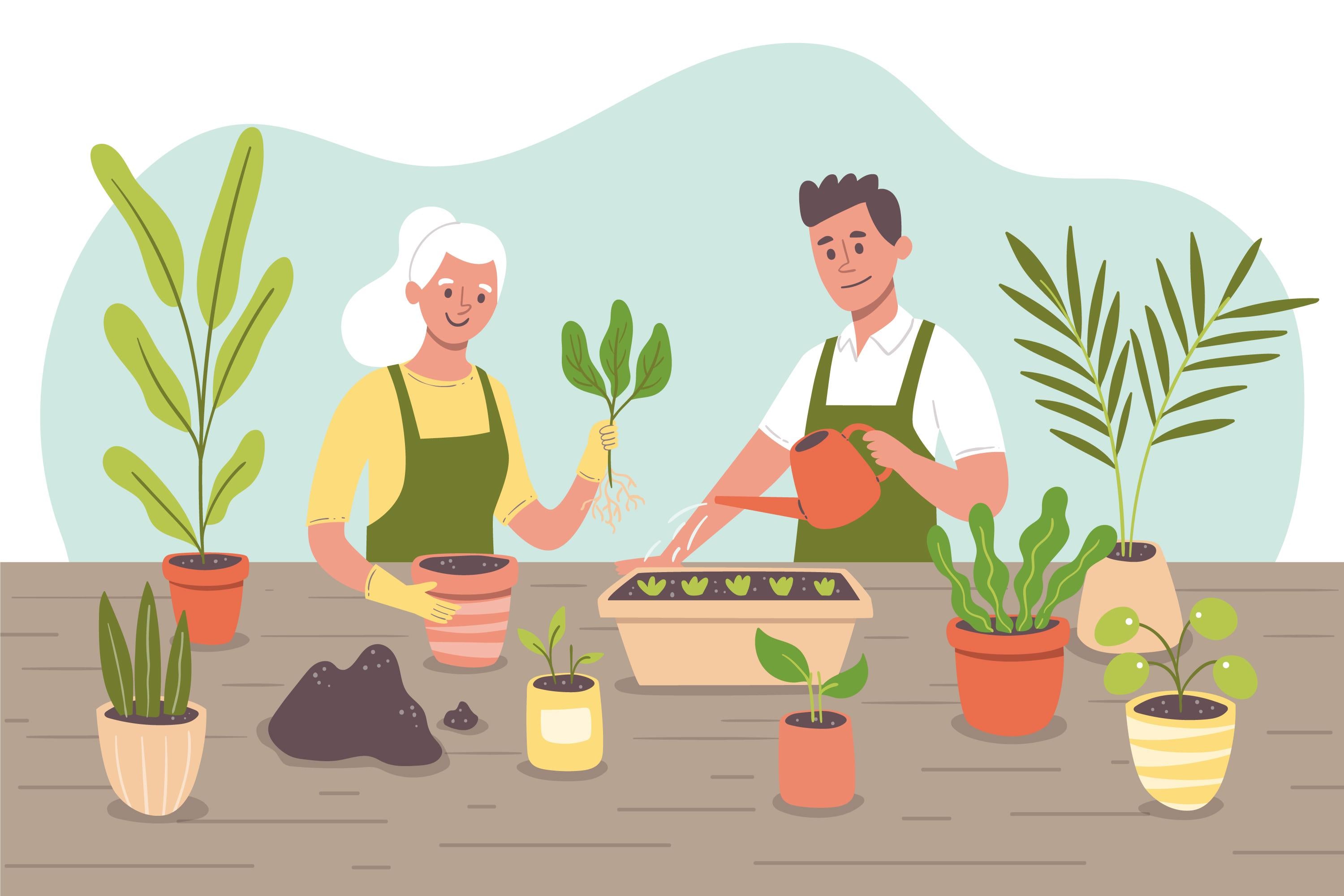Sprout into Springtime: Newbie Gardening 101 for Expanding a Lively Garden Sanctuary
Wiki Article
From Beginner to Environment-friendly Thumb: A Step-by-Step Trip With the Art of Horticulture
:max_bytes(150000):strip_icc()/102683249_preview-2000-be230cf7d0f7407587bf77003132f539.jpg)
Understanding Your Horticulture Area
To begin your horticulture journey, it is vital to understand the unique features and restrictions of your gardening area. Take a moment to observe your environments. Is your area large or little? Is it exposed to complete sun or does it obtain partial shade? Exist any details difficulties you may face, such as bad dirt high quality or minimal water accessibility? Recognizing these aspects will certainly assist you make educated decisions concerning the kinds of plants that will certainly thrive in your area.Take into consideration the dimension of your horticulture area. You may need to concentrate on container horticulture or upright horticulture to maximize your growing area if you have a little area. On the various other hand, if you have a huge room, you have the luxury of planting a range of plants and producing various areas within your yard.
Following, evaluate the quantity of sunshine your room obtains. This will certainly determine which plants will thrive and which ones may have a hard time. If your room is shaded, you can choose shade-loving plants like ferns or hostas. If your space receives complete sunlight, you can expand a wide range of plants, including herbs, flowers, and vegetables.
Last but not least, consider any limitations or obstacles particular to your area. If your dirt top quality is inadequate, you may require to modify it with compost or choose plants that are forgiving of less-than-ideal conditions. You can choose for drought-tolerant plants or implement water-saving strategies like mulching. if water is scarce.
Picking the Right Plants for Your Yard
Select plants that are appropriate to your yard's unique conditions and your individual choices. When choosing plants for your garden, it is vital to consider elements such as sunshine, dirt kind, and climate. Some plants choose well-drained dirt, while others grow in clay-like or damp dirt.It's additionally worth taking into consideration the upkeep degree of the plants you pick. Some plants call for even more care and interest, while others are much more low-maintenance.
Preparing the Soil for Planting
A lot of plants prefer a slightly acidic to neutral pH, around 6.0 to 7.0. Improperly drained pipes soil can lead to waterlogged origins and various other plant health problems. By analyzing and making necessary changes to your dirt, you can develop an optimal environment for your plants to prosper.Nurturing and Keeping Your Garden
When you have actually prepared the dirt, it's time to obtain your hands dirty and start supporting and keeping your yard. The secret to an effective yard is regular care and interest. Watering is important, specifically throughout completely dry spells. Ensure to water your plants deeply, enabling the water to permeate the dirt and get to the origins. Routine weeding is additionally vital to maintain your yard devoid of undesirable plants that compete for nutrients and space. Take out any weeds, making sure to remove their roots to stop them from coming back. Furthermore, it's vital to supply correct nourishment for your plants. Take into consideration making use of organic fertilizers or compost to enrich the dirt and advertise healthy and balanced development. Trimming is an additional vital job to maintain your yard looking cool and motivate much better air flow and sunshine infiltration. Trim off any type of dead or broken branches to preserve the general health and wellness of your plants. Be on the hunt for bugs and diseases. Consistently evaluate your plants for any indications of infestation or ailment and take prompt action to avoid additional damage. By following these nurturing and upkeep techniques, you will guarantee a thriving and stunning yard.Troubleshooting Common Gardening Issues
To address typical horticulture issues, begin by identifying the issue and taking prompt action. Among one of the most typical concerns gardeners face is bugs. If you discover eaten fallen leaves or plants that are wilting for no obvious reason, you may have a parasite infestation. Check your plants very closely for signs of bugs or various other pests. Remove them by hand or make use of natural insect control techniques if you detect any. One more typical trouble is nutrient deficiency. They may not be getting enough nutrients if your plants have yellow or discolored leaves. Think about feeding your dirt or including garden compost to boost its vitamins and mineral web content. Overwatering is an additional concern that can damage your plants. You may be overwatering if you notice waterlogged soil or wilting despite adequate watering. Adjust your watering schedule appropriately and make sure correct water drainage. Illness can also impact your garden. It might be a sign of illness if you see places, mold and mildew, or unusual growth on your plants. Eliminate influenced plants and treat the staying ones with natural fungicides or pesticides. By immediately attending to these typical issues, you can ensure the health and success of your garden.Conclusion
By comprehending your gardening room, choosing the right plants, preparing the dirt, and nurturing your yard, you have actually gotten rid of common horticulture concerns like a pro. Now, armed with expertise and experience, you are prepared to delight in the beauty and wealth of your flourishing yard.
When picking plants for your garden, it is essential to consider variables such as sunlight, soil kind, and climate. Some plants favor well-drained soil, while others thrive in clay-like or wet soil (newbie gardening). By understanding your horticulture space, picking the right plants, preparing the dirt, and nurturing your garden, you have newbie gardening actually conquered usual gardening concerns like a pro
Report this wiki page